Astronomy doesn't need to stop just because the Sun's come up, as there are multiple celestial targets you can see during the day.
You can even see some of the brightest stars begin to appear in the early morning or as daytime darkens into twilight.
From observing the Sun to stargazing during the day, these are the best ways to double your astro-fun and do some daytime stargazing.
The Sun

The most obvious star that can be seen during the day is our own star, the Sun.
Extreme care has to be taken, however, as observing the Sun without proper solar observing equipment can damage your eyesight.
Even looking at the Sun with the naked eye is dangerous, but looking at it through binoculars or a telescope can cause permanent damage.
Solar eclipses

One of the most spectacular solar observations is a solar eclipse, where the Moon passes in front of the Sun and blocks out its light for a short while.
Eclipses can last a few seconds to up to eight minutes and the difference in duration of solar eclipses comes down to the fact the Moon’s orbit is slightly eccentric.
Sometimes the Moon is closer to Earth, making totality last longer.
Then when the Moon is at the other extreme at its furthest from us it doesn’t quite cover the solar disc, and so we see a ring of fire, known as an annular solar eclipse.
Solar observing
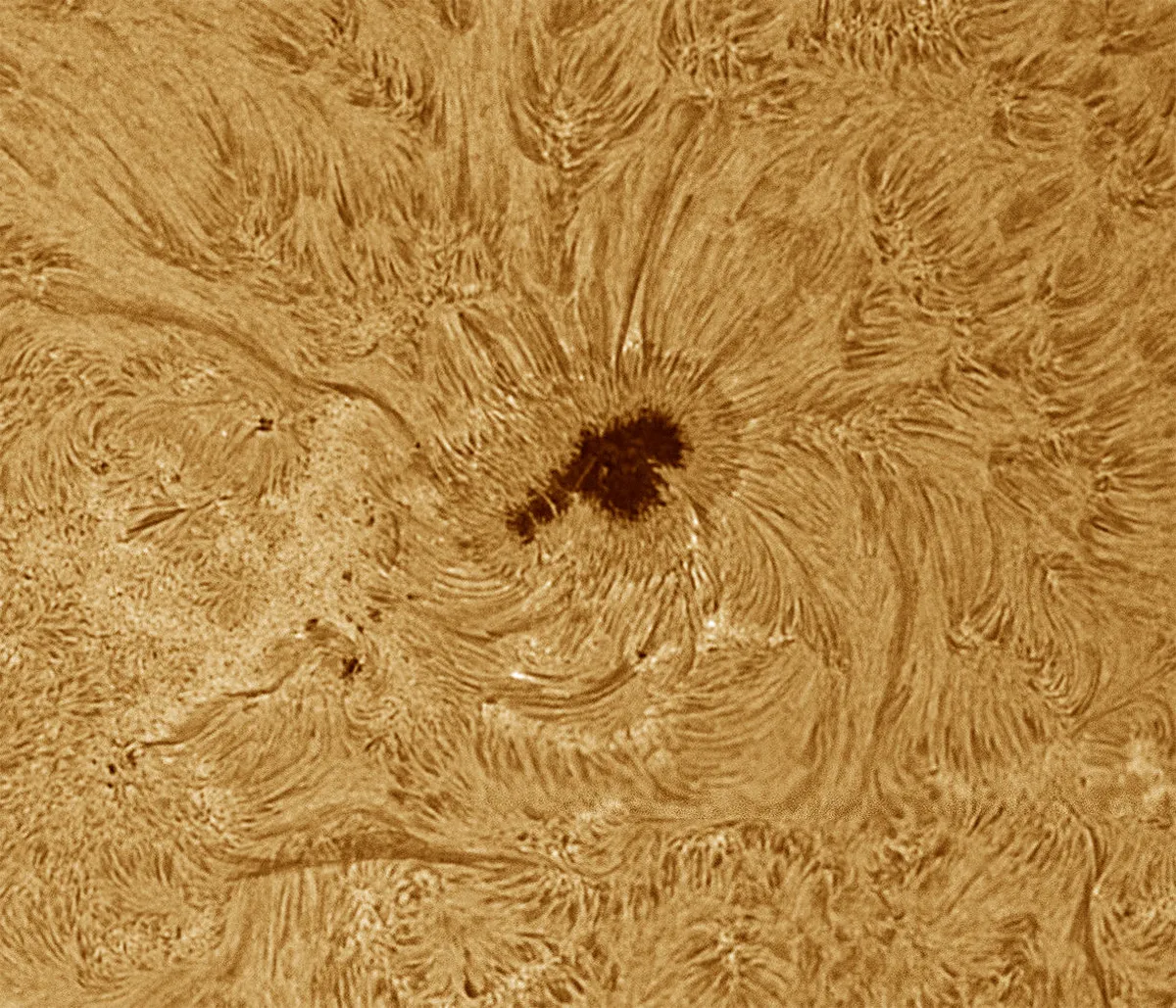
That isn’t to say the Sun isn’t worth looking at (with proper safety precautions) when it’s not being eclipsed.
White light observing allows you to safely view sunspots and surface granulation, along with bright patches known as faculae near the limb of the Sun where the disk is slightly darker.
For more on this, read our guide on how to observe sunspots.
Specialist Hydrogen-Alpha telescopes and eyepieces bring out a view of the red chromosphere, with spectacular prominences and loops on the disc's edge that in the past were only visible during an eclipse.
It’s also possible to see prominences on the Sun’s main disc, where they are called filaments and stand out as dark curvy lines on the surface of the Sun.
Observing the Sun safely
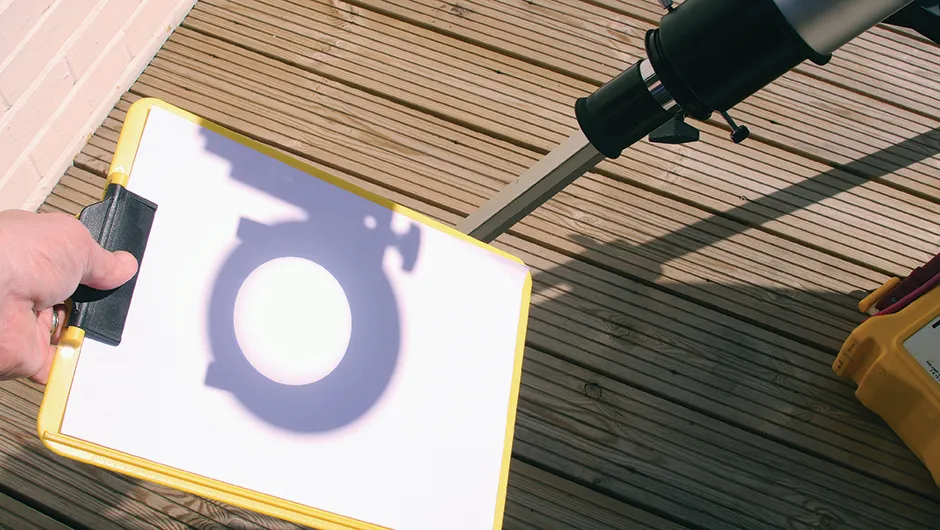
Looking directly at the solar disc is dangerous and can potentially permanently damage your eyesight.
You should never look at the Sun directly through an unfiltered telescope or binoculars. Fortunately, there are many methods to look at the Sun safely.
- Project the view through a telescope or binoculars onto a piece of card. This is known as solar projection and is a popular method of observing a solar eclipse. Remember to cap off any optical finder to ensure no one looks through it accidentally.
- Buy a Herschel Wedge Prism that replaces your diagonal in a refractor telescope and transmits a much reduced, safe amount of light to your eyepiece or camera.
- Use a white light solar filter. You can buy the film and make a filter yourself or buy a pre-made one. Make sure it fits snuggly so it won’t fall off when you are looking through the telescope. As with all solar observing, if in doubt, do not attempt to make one yourself, and buy a safe, certified filter from a reputable seller instead.
- Specialist solar telescopes and eyepieces are expensive, but can give some spectacular views of the Sun at different wavelengths.
The Moon
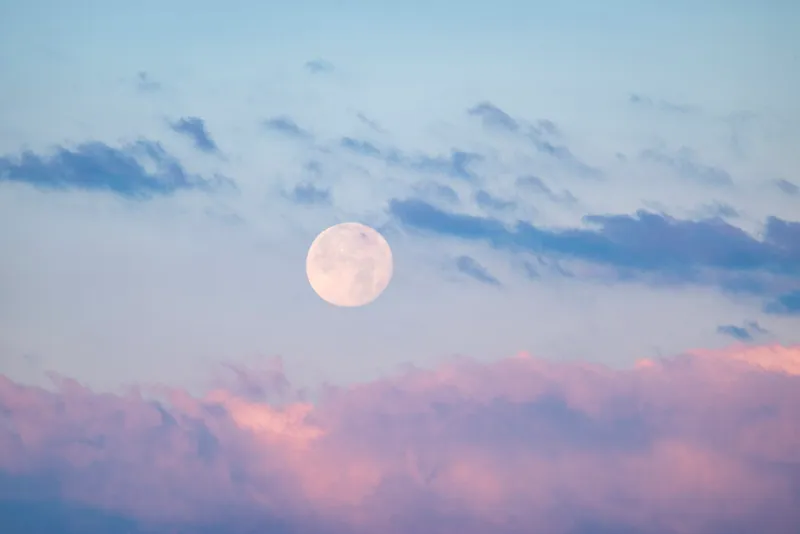
The Sun is the obvious daytime target, but it is surprising to many that the Moon is also visible during daytime depending on its phase.
As it moves away from the proximity to the Sun it is initially difficult to see, but during the few days either side of the First Quarter it becomes easily noticeable in the afternoons well before sunset.
Although somewhat washed out by the blue sky, it is nonetheless fascinating to use the naked eye to spot the dark ‘seas’ or lunar maria amidst the bright highland terrain.
If you are an early bird and enjoy the mornings, then the days either side of Last Quarter offer a good chance to see the Moon.
Telescopes will bring out some of the features usually viewed at night, but again they will be more washed out due to the brightness and blue cast of the daytime sky.
But detail along the terminator will be viewable.
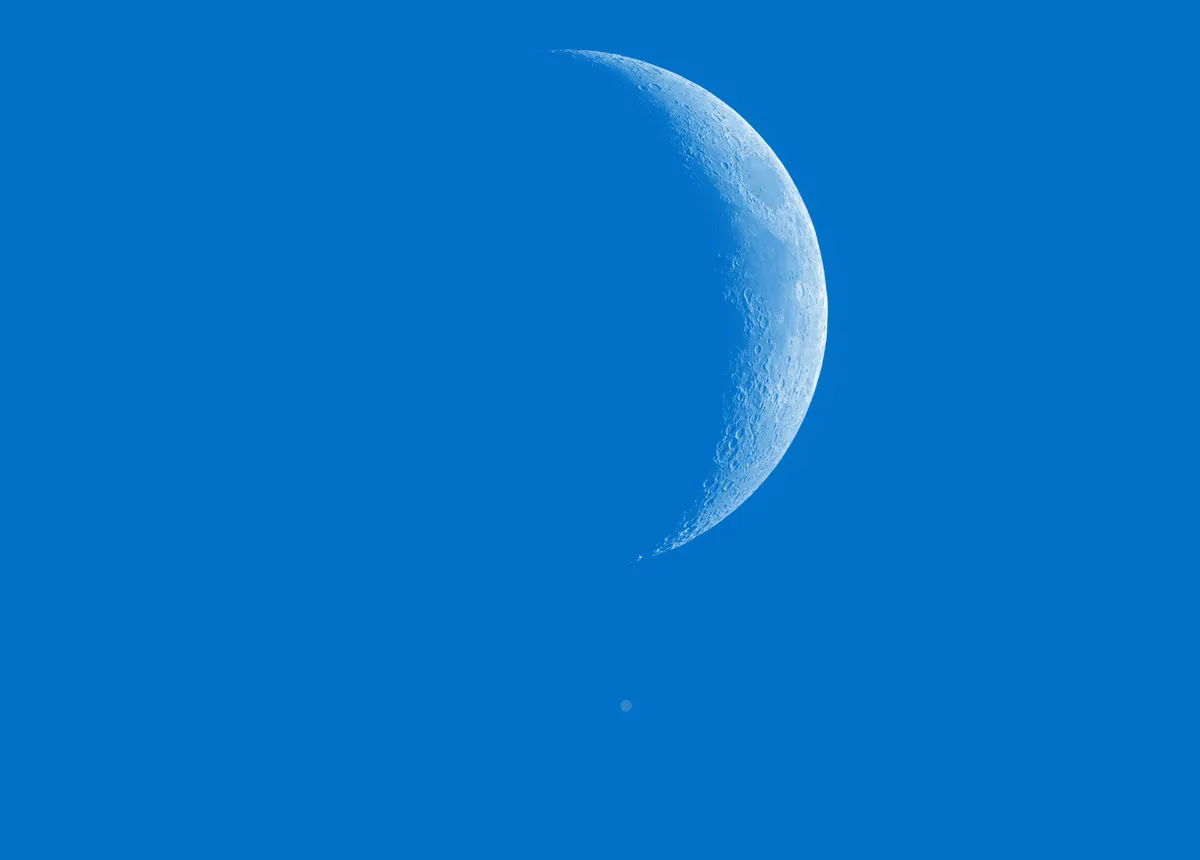
Planets
Because it can be reasonably obvious to spot the Moon with the naked eye it can help us find some of the brighter planets too.
Based on what we’ve already noted, in most cases it follows that it is only when the conjunction between the Moon and a planet occurs that it can guide you to spot Venus, Jupiter, Mercury, Mars (at its brightest) and Saturn.
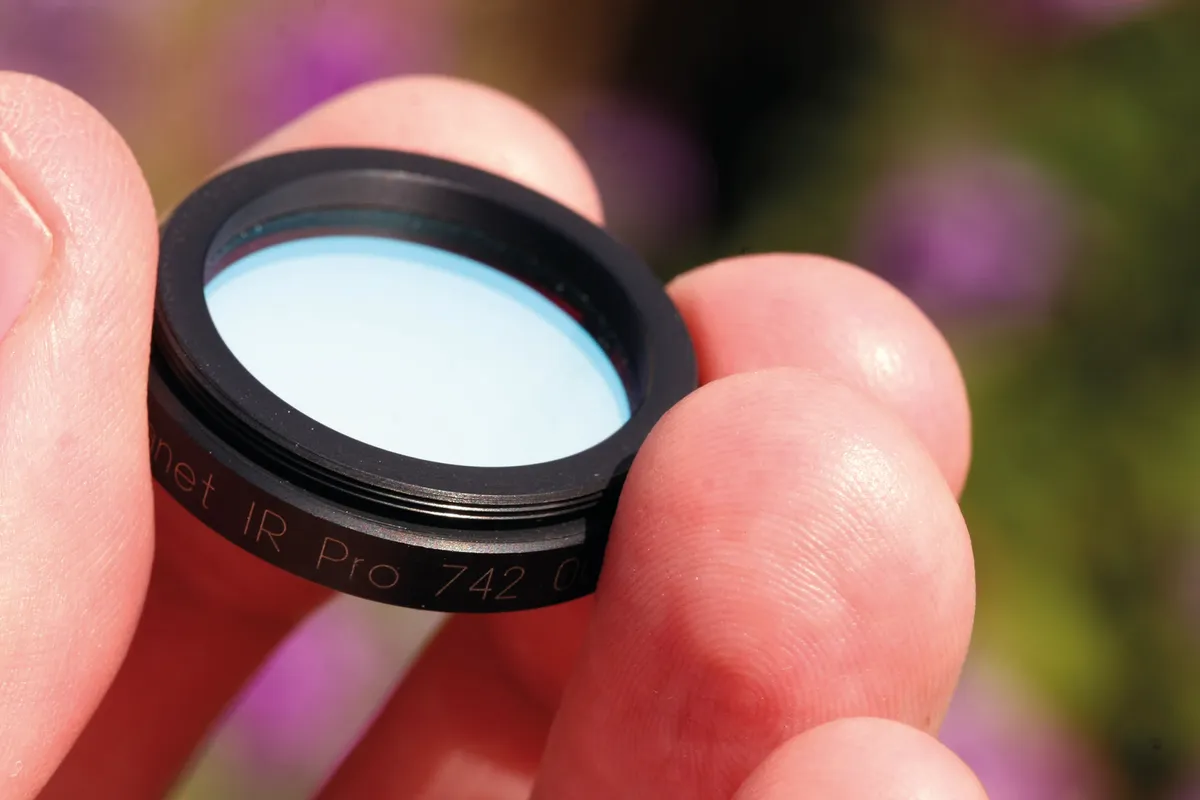
On other occasions you might have spotted Venus and Jupiter without the help of the Moon, but when they were highest in the south with the Sun at least 60 degrees away from them.
The sky this far from the Sun is darker, giving better contrast for spotting the two brightest planets in daytime.
This is also where stargazing apps and planetarium programmes can tell you where to look, especially if they have a compass so you can hold the phone up to the sky then look in that direction or aim your binoculars or telescope.
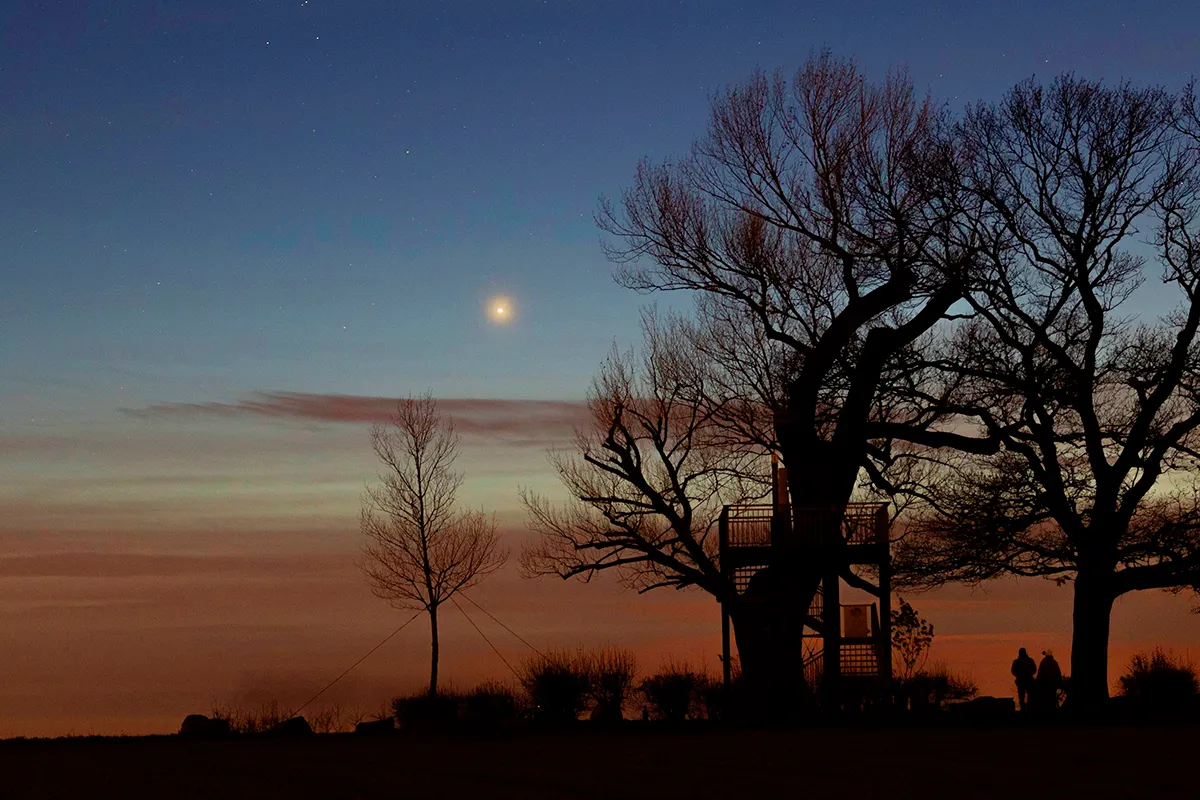
Telescopically, Venus is the brightest and easiest to locate during daytime, and is often referred to as the morning star. Jupiter and Saturn look like pale, imitations of themselves.
Mars is best when it is at its biggest and brightest but still appears ghostly.
Mercury should be as far from the Sun as it can get for you to spot it with a telescope.
Use telescope filters when observing the planets to help pull out a little detail, especially with Venus – an ultraviolet filter will tease out subtle markings while a red filter darkens the background sky.
Seeing stars during the day
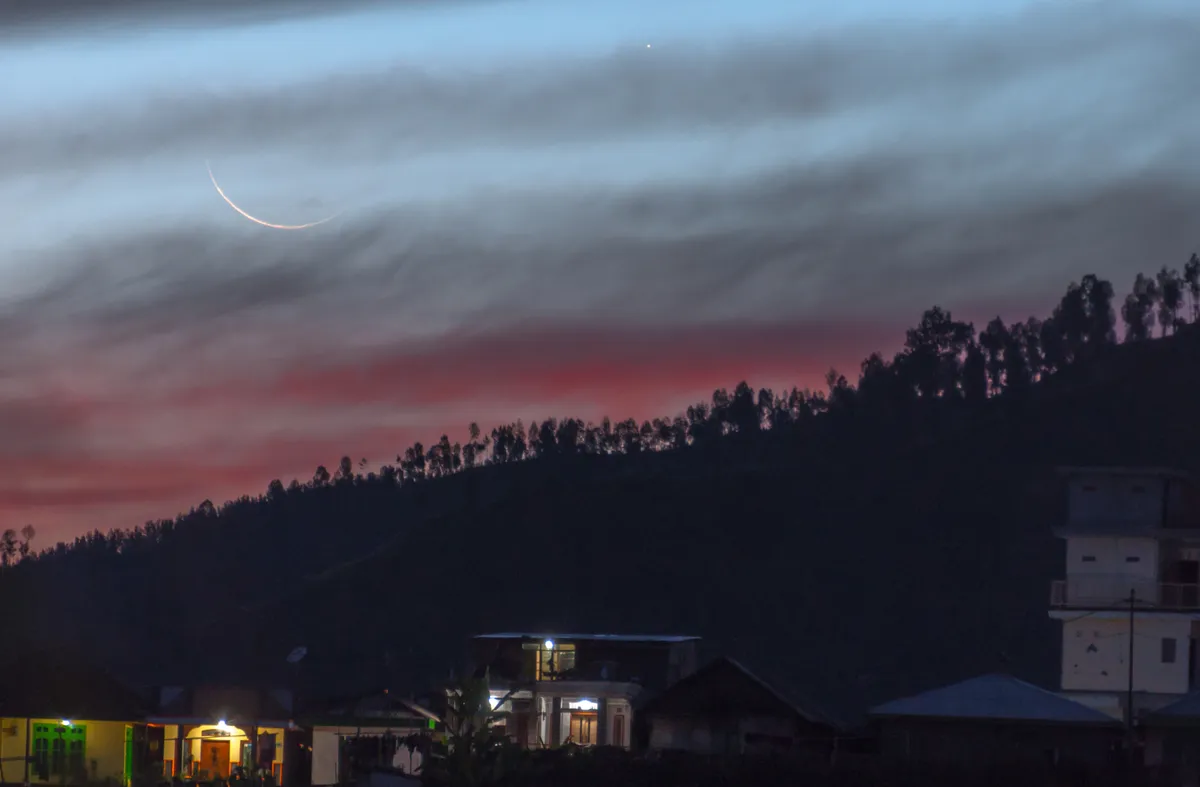
The same applies to stars. Wait, what, stars? Yes you can see them during the day, although you will need a telescope.
Using the same techniques as for the planets it is possible to view a few of the brightest stars during daytime, making for a fun and unusual project.
This is something you should only attempt if you know what you are doing, as accidentally observing the Sun through your telescope could permanently damage your eyesight.
It's easy to get lost in your observations and, with your eye held up to the eyepiece, accidentally sweep across the daytime sky and catch the Sun.
The key is to observe stars in the south with the Sun over in the western sky, which for our viewing was a couple of hours before sunset.
You can also position yourself so the Sun is blocked out by a tall building, reducing the risk.
We used our 80mm ED refractor to view the primary stars of Orion including Betelgeuse, Rigel, Bellatrix and Alnitak along with Iota Orionis, although its binary companion was not viewable.
We also tracked down Capella, Procyon and Aldebaran.
For stars lower down in the sky, there’s more haze to spoil the view, but we did spot Sirius with 10x50 binoculars over in the south, half hour before sunset.
With our telescope we estimated that the cut-off limit was mag 3 but it does depend upon sky conditions and how high they are in the sky.
Sun dogs
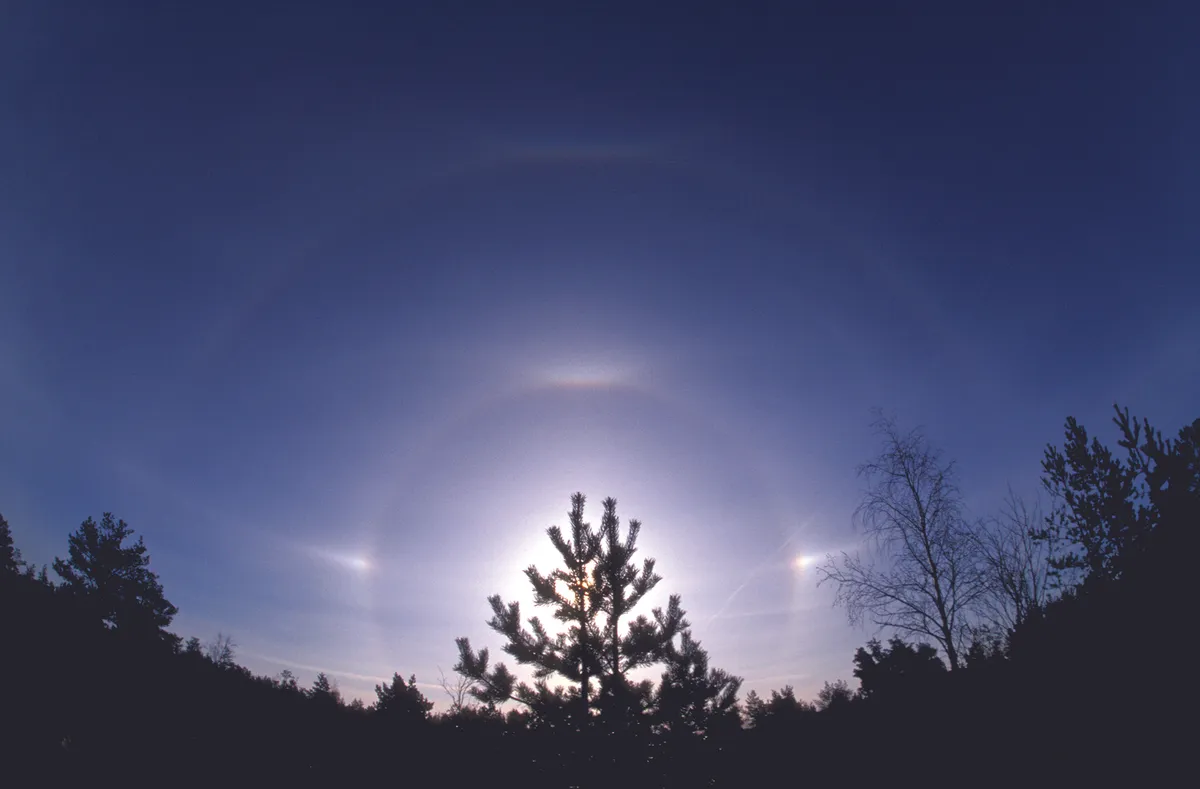
Another great thing to see is a mixture of astronomical and atmospheric effects. When there is a fine, high-level haze or cirrus cloud in the sky, they can cause a variety of interesting effects around the Sun.
One of these are sun dogs, or parhelia.
These are most often spotted 22º either side of the Sun, and can be bright spots or patches resembling a rainbow.
Associated with them are the solar halos, where there is a complete hazy circle around the Sun, again at about 22 degrees from it.
As the sun gets low in the sky you can also look-out for the sun pillar, a column of light extending upwards by around 5 to 10 degrees.
If you’re really lucky, you might even get to see the ‘green flash’ – are rare phenomenon seen just as the sunrises and sets, where a flash of green light appears just above it on the horizon.
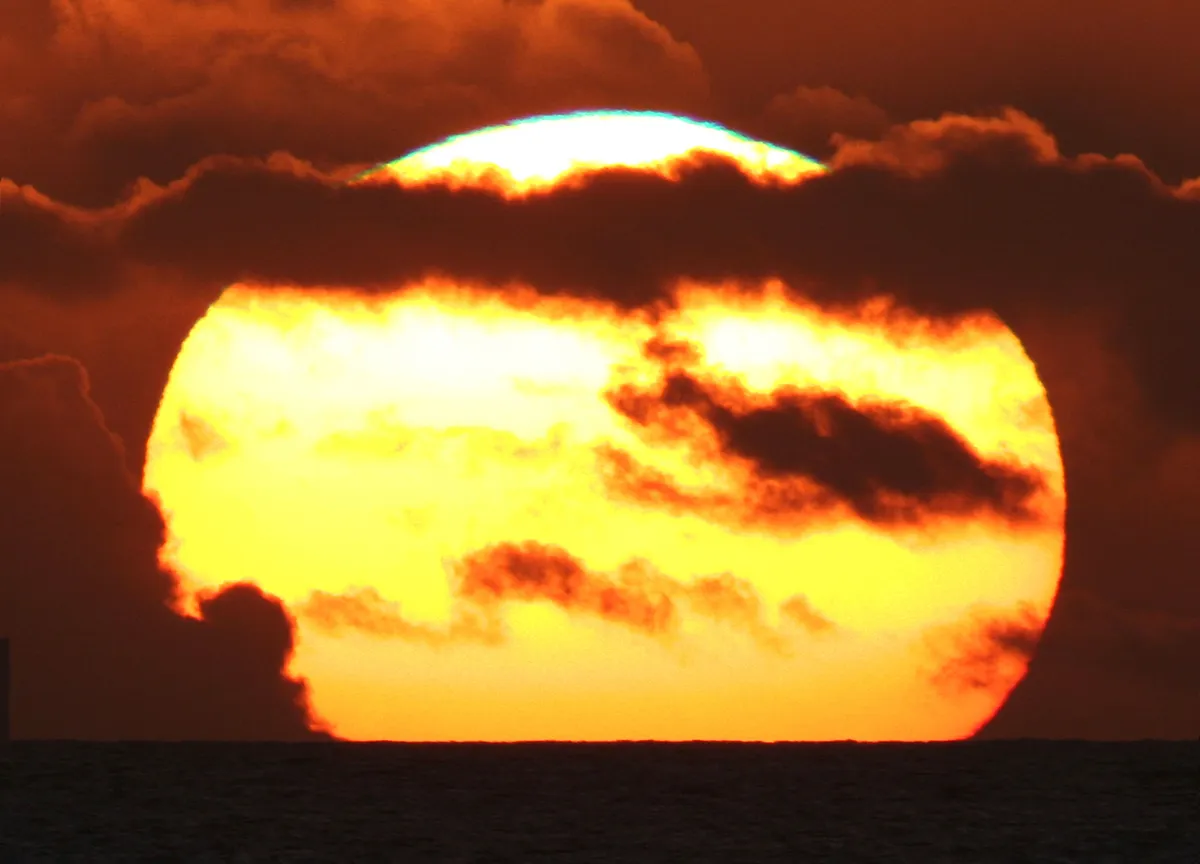
Sometimes the clouds themselves – bane of every astronomer’s life – can appear beautiful, such as iridescent or the rare nacreous clouds, sometimes called mother-of-pearl clouds.
These can be seen a couple of hours before sunset and into twilight and are clouds which are higher up meaning when the sun is low they are illuminated from the bottom creating vivid colours.
Other clouds can also give rise to rays of light known as crepuscular rays, when the Sun is hidden behind a dark cloud.
Circumzenithal arcs

These stunning phenomena appear as upside-down rainbows wrapped around the zenith. The curved edge extends down towards the Sun and is red on the outside.
Look out for them when the Sun is fairly low in the sky and particularly if you can see sundogs.
This is because the same ice crystals that produce the sundogs (and also halos) are responsible for producing these arcs.
They only form when the Sun has an altitude of less than 33° and are best seen when the Sun is about 22° high in the sky.
Distorted sunsets
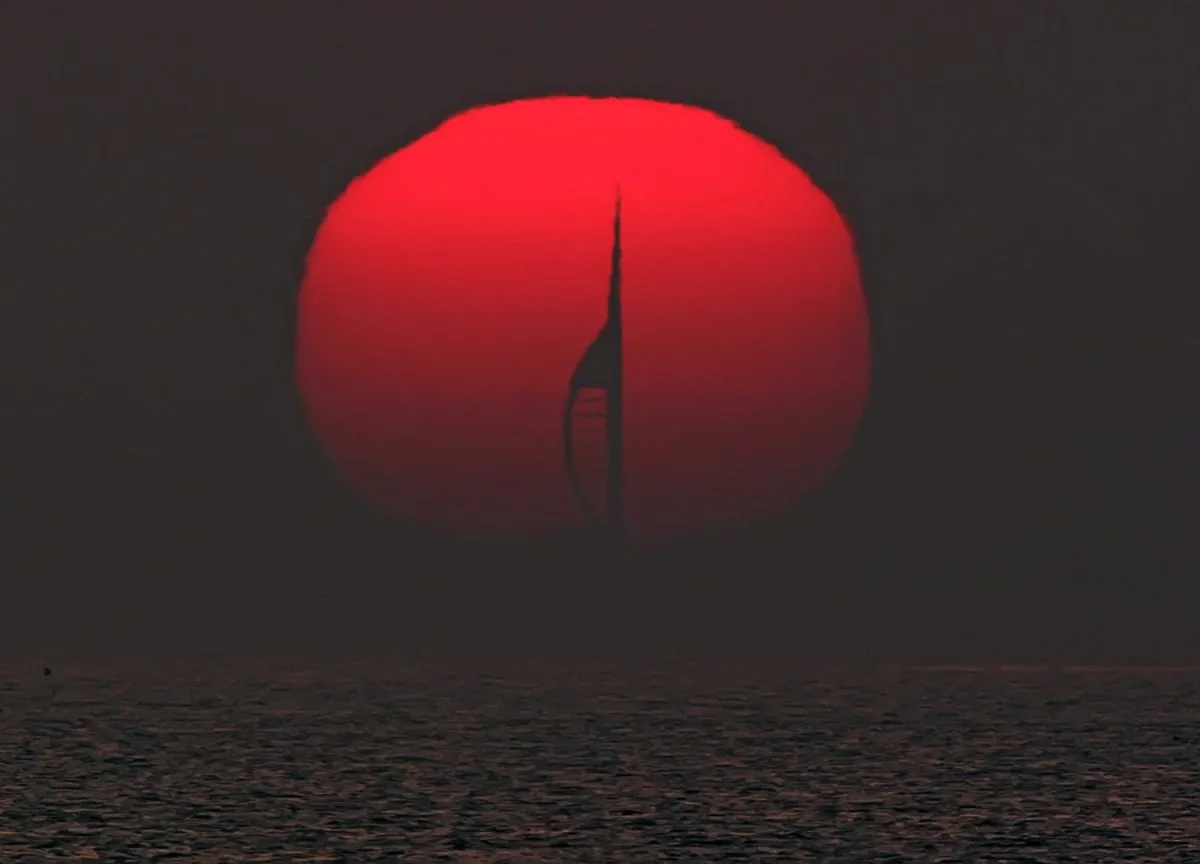
Light from the Sun is always subject to distortion as it passes through the Earth’s atmosphere.
The setting Sun is especially susceptible, because the light path through the atmosphere is longer.
Often the setting Sun appears flattened or oval in shape. This occurs when light coming from the lower limb of the Sun is bent upwards, making it appear higher in the sky than it actually is.
Extreme density variations in the atmosphere can cause severe distortions, also called sunset mirages. Under these conditions the setting Sun can appear to be made up of several cigar shapes.
Glories
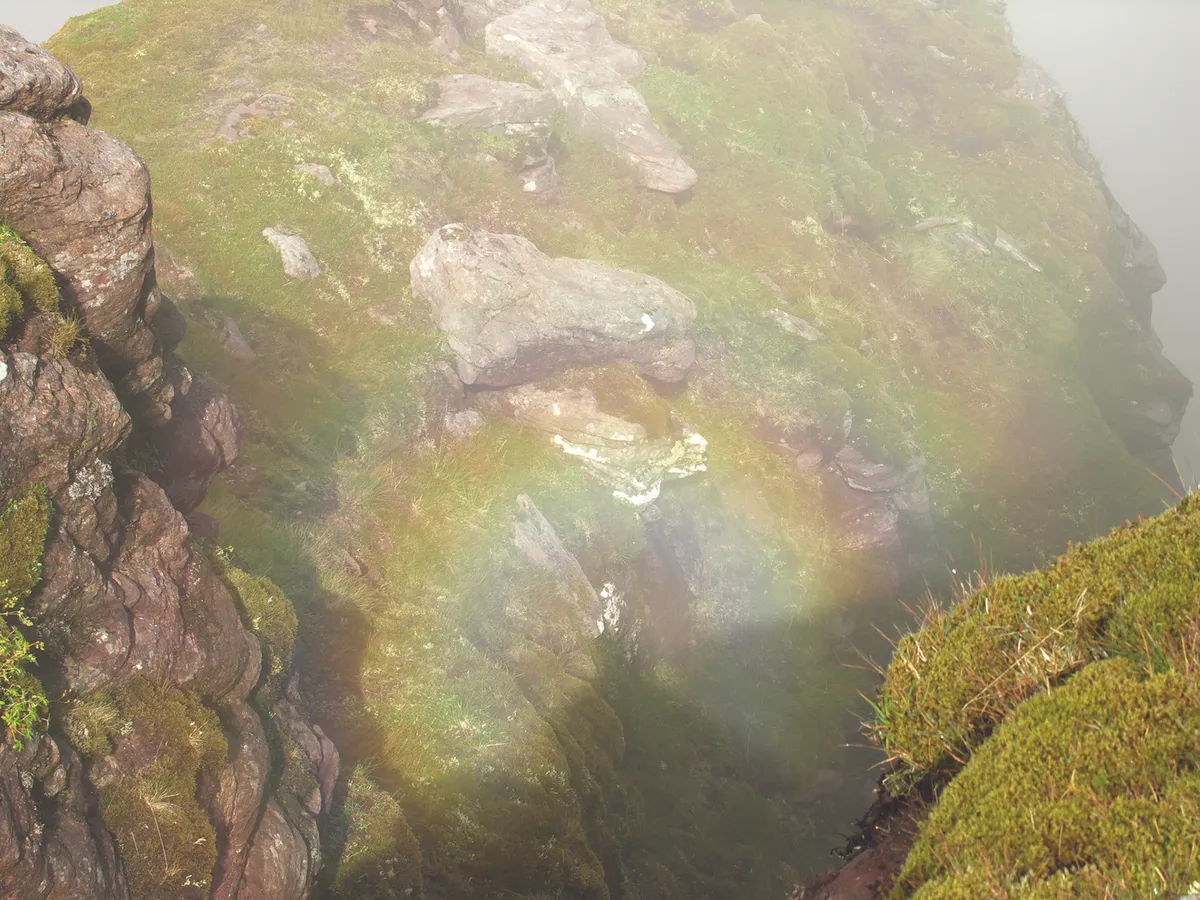
Glories always appear on the opposite side of the sky to the Sun, at the anti-solar point – the point opposite to the Sun in the sky – and take the form of a series of concentric, coloured rings.
They are thought to be formed when the Sun’s light is scattered back to the observer due to small water droplets in the atmosphere.This also separates the light into its constituent colours, hence the rainbow effect.
On a foggy day at sunrise or sunset, try and see a glory by standing with the Sun behind you. The glory might appear round the shadow of your head. Glories are often seen from aircraft.
Green flashes
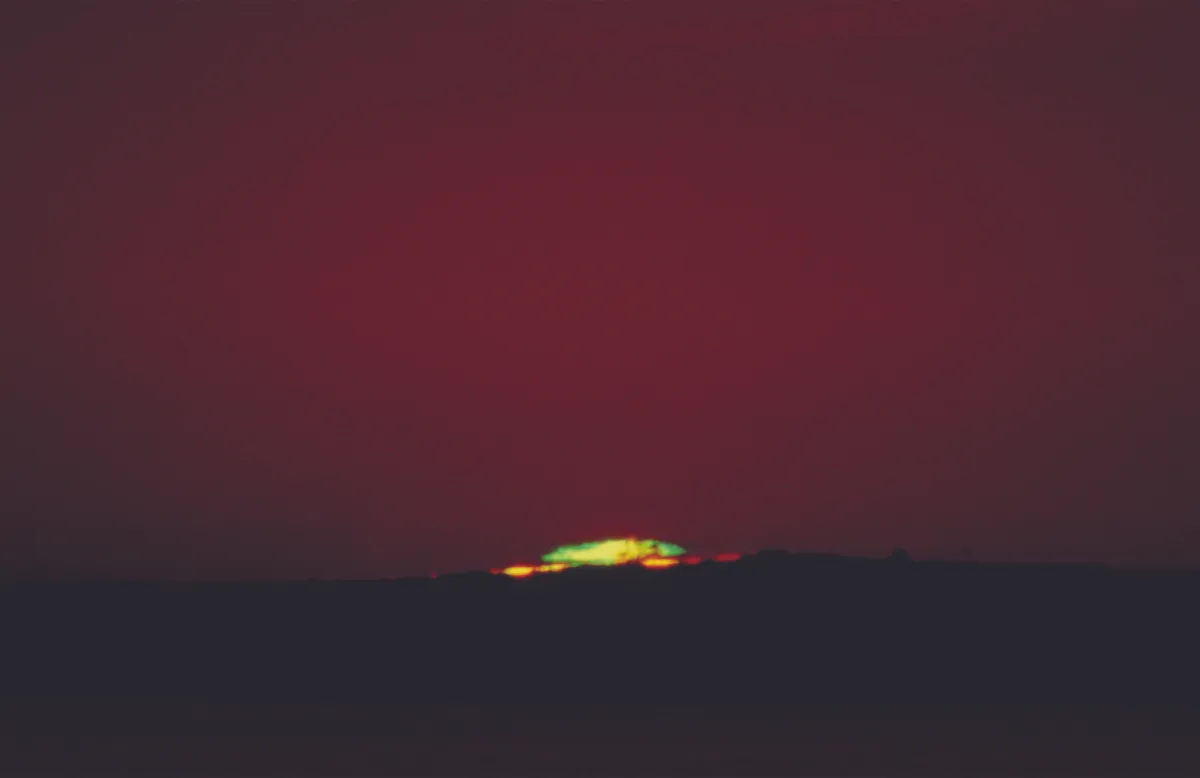
The famous but elusive green flash appears as a fleeting change in the Sun’s colour, from orange to green just as it disappears over the horizon. It’s hard to observe because it only lasts for a few seconds.
This effect is caused by layers of air at different densities, which amplify small differences in the separation of the Sun’s light into its constituent colours as it passes through the atmosphere.
A miraged Sun is a good sign that a green flash might happen and a high viewing point is recommended.
Anticrepuscular rays
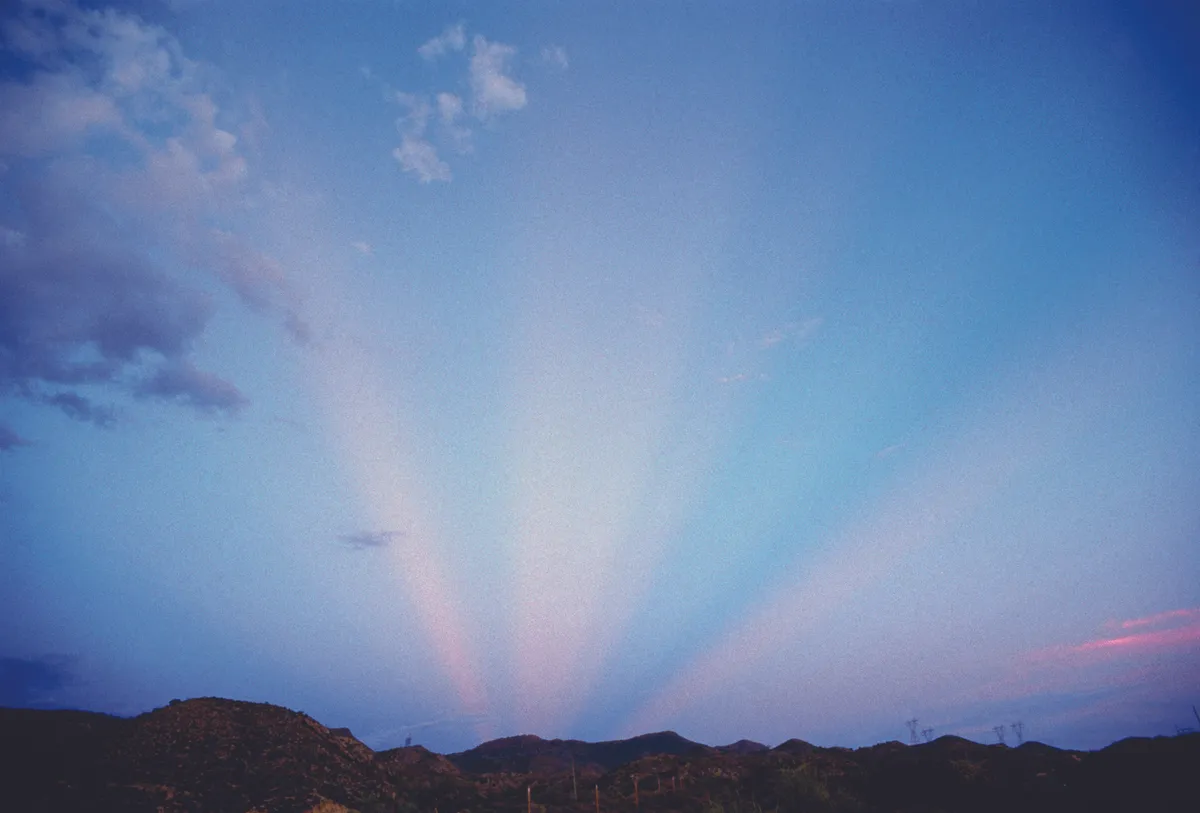
These rays are parallel shafts of light coming from the Sun that appear to converge on the anti-solar point. Just like a long, straight road appears to converge in the distance, so these parallel rays appear to converge just over the horizon. Anti-crepuscular rays aren’t particularly rare – look for them when the Sun is setting.
At this time, turn around and look at the opposite part of the sky. However, the cloud structure needs to be right to allow the Sun’s light to be seen as beams.
Other phenomena
It’s also possible to see the International Space Station during some of its daytime passes, particularly when it transits across the Moon and Sun.
It’s even possible to see some meteors during the daytime, if you happen to be lucky enough to catch them – though you can always set up a radio meteor detector to detect them 24/7.
Whatever your passion, there is still plenty to look out for in the daytime sky so go on, check some of them out and let us know how you get on.
What are your favourite daytime astronomy targets? Let us know by emailing contactus@skyatnightmagazine.com
